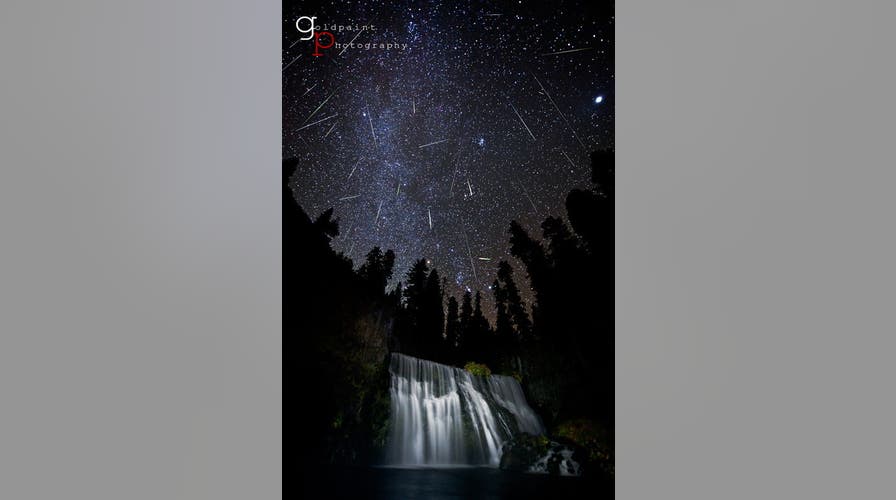Fox News Flash top headlines for October 20
Fox News Flash top headlines are here. Check out what's clicking on FoxNews.com.
Nearly two weeks after the Draconid meteor shower lit up the night skies, the Orionid meteor shower will do the same this week, giving stargazers a great view.
Peaking in the early-morning hours on Oct. 21, the Orionids produce "10-20 shower members at maximum," though they have been known to produce as many as between 50 and 75 per hour, according to the American Meteor Society.
It occurs every year between Oct. 2 and Nov. 7, the organization added.
HOW DO NASA ASTRONAUTS VOTE IN SPACE?

File photo: Photographer Brad Goldpaint captured this spectacular view of the Orionid meteor shower over Middle Falls outside the city of McCloud, Calif., near Mount Shasta in 2011. (Brad Goldpaint/Goldpaint Photography)
The Orionid meteor shower contains debris from Halley's Comet that travels at speeds up to 148,000 mph, according to Space.com.
Halley's Comet, which last appeared in 1986, orbits the sun every 76 years and will not be seen again until 2061, NASA notes.
It's expected the meteor shower will peak in the early-morning hours on Oct. 21, around 1 a.m., but skygazers should check timeanddate.com to get an idea of the best viewing time in their area.
How are meteors formed?
A meteor forms when a meteoroid, a type of space rock that breaks off from an asteroid — a rocky body orbiting the sun — enters Earth's atmosphere. As soon as the space debris crosses over, it breaks down into what scientists call a "meteor," which then vaporizes and — as a result of friction — appears as a bright streak of light in the sky.
"Because of their appearance, these streaks of light some people call meteors 'shooting stars,'" NASA explains in a blog post. "But scientists know that meteors are not stars at all — they are just bits of rock!"
Other meteor showers this year include the Leonids and Geminds in November and December, respectively.
Orionid meteors
Orionid meteors are small chunks of rock that break off Halley's Comet. These particular meteors are named after their point of origin — the constellation Orion.
As Halley makes its way into the inner solar system, it "sheds" debris and dust particles that eventually form into meteors, NASA explains.
"Halley treats us to a meteor shower twice a year as our planet passes by the debris cloud," NASA meteor expert Bill Cooke said in a 2015 NASA blog post. "In May we have the Eta Aquariids, and in October the Orionids."
According to NASA, Orionid meteors are known for their "brightness and speed."
CLICK HERE TO GET THE FOX NEWS APP
Fox News' James Rogers and Jennifer Earl contributed to this story.

